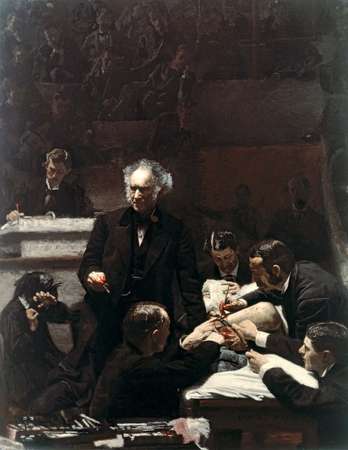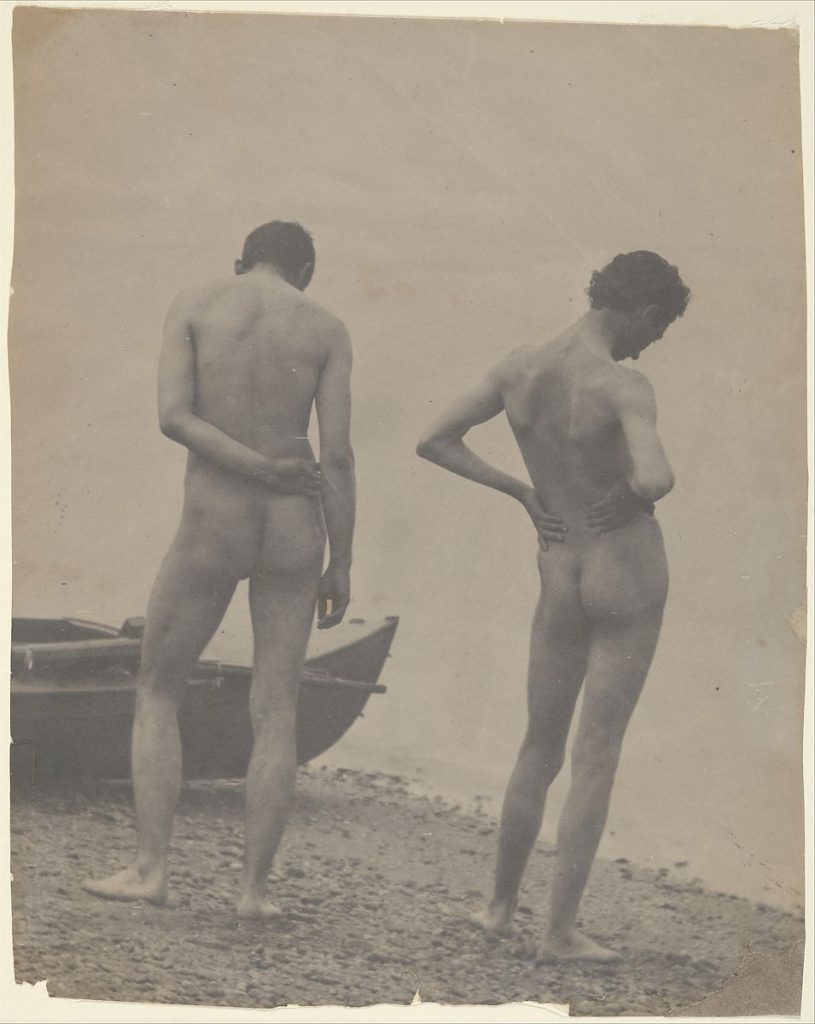Thomas Eakins was born on July 25th, 1844 in Philadelphia, Pennsylvania U.S.A. He attended the Pennsylvania Academy of Fine Arts, and anatomy lectures at the Jefferson Medical College. He painted dissections, and even participated in them. In 1866, he attended the École des Beaux-Arts in France, where he studied with Jean-Léon Gérôme. He was influenced by the works of Diego Velázquez and José de Ribera and they piqued his interest in oil painting. The subjects of his paintings were usually of his family and his daily activities, including fishing and rowing. In 1879, he began to teach at the Pennsylvania Academy of Fine Arts, and was adamant about using live nude models for practicing anatomy, saying that the relation between artist and model was as professional and objective as between a doctor and patient. This view was not supported by everyone, and he was forced to resign in 1886.
Eakins had a strong interest in human anatomy throughout all of his career, and his views of the human body are obviously influenced by the way medical procedures in the amphitheatre were conducted. It is impressive that the subjects of his work ranges from the unique surgical demonstrations of the time to more humble and modest paintings of his daily interests. Not only are his subjects broad, but his use of media is as well. He made paintings, sculptures, and even experimented with photography.





